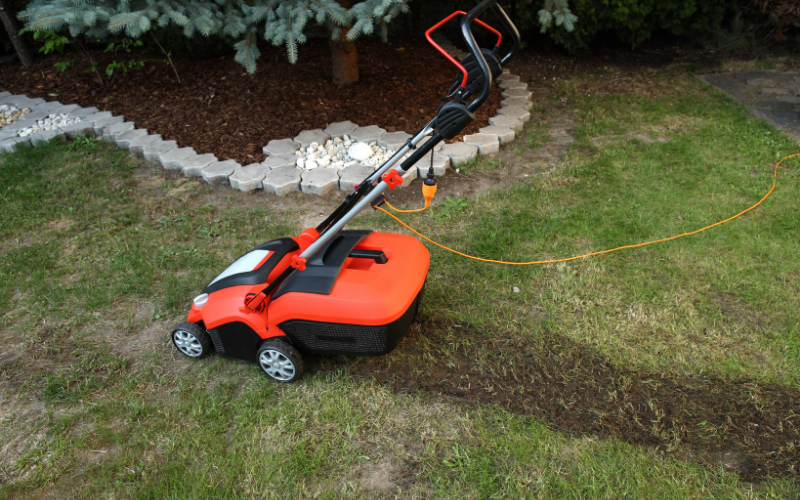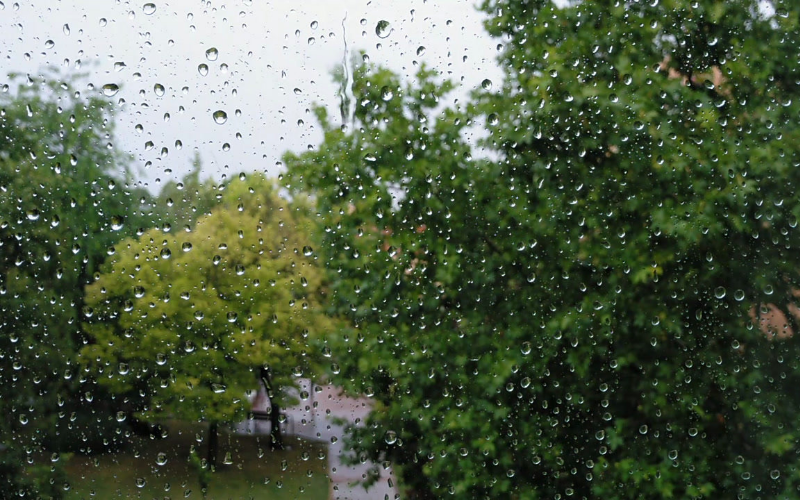Rain is unpredictable. Our weather reports try to be as accurate as possible. When it’s the height of lawn care season and you need to wait weeks for a rental or an appointment with a lawn care company, however, you may need to rely more on luck than the weather report. Still, luck being what it is, sometimes the rain will come and you’ll be left wondering if it’s safe to aerate your lawn now or whether you need to wait until your next opportunity- whenever that is.
Can You Aerate in the Rain? – The Short Answer
Can you aerate your lawn in the rain? Yes. However, doing so may lead to unintended consequences depending on the climate where you live as well as how heavy the rain is. This could mean flooding or unintentionally creating anaerobic conditions for your lawn. It is especially risky to aerate your lawn during heavy rain or if you have clay soil during any type of rain.
Potential Consequences of Aerating Your Lawn in the Rain
Aerating your lawn after a short sunshower, a light but consistent drizzle, or even on a dense and foggy day should allow you to avoid all of the following complications before, during, and after aeration. These damp conditions can even help you achieve easier, more even aeration. However, aerating during a long, heavy rain shower or any type of rainstorm can lead to several or all of the following conditions, especially if you have heavy, clay soil.
Compaction and Clumping
Aerating a wet lawn most often leads to compaction and clumping. When an aeration fork, machine, or roller goes over an area and that area is then walked over, rained on, or pressed under the weight of the machine’s tires, compaction occurs. This can even close up and “erase” aeration holes that have just been opened up.
Frustration (and a Jammed Machine)
Using an aeration machine that removes plugs from the soil is supposed to make aeration take less time and effort. Doing this when the lawn is too wet, however, can result in a machine that gets full of mud, is hard to clean, or compacted plugs that are difficult to remove as the machine works its way around the yard.
Ruts
Damp conditions should allow your soil structure to stay intact. The weight and pressure from heavy machines and boots shouldn’t leave a mark on your lawn. However, if your lawn is waterlogged, muddy, or otherwise too wet for aeration, you will likely be left with deep ruts from an aeration machine’s tires or even just from boots. And fixing lawn ruts isn’t a 5-minute job.
Erosion
If you don’t get compaction from aerating your lawn during heavy rain, you’ll likely get erosion instead. When the machine loosens up the soil, it can make it easy for the pockets to fill with water and, if there is a slope, it may encourage slippage or the grass may move, along with the soil, down the slope- a bit like a small mudslide.
The Creation of Anaerobic Conditions
Often, aeration is done to avoid aerobic conditions. However, if you have clay soil or sandy soil with little organic matter, you could end up creating anaerobic conditions. This means that the soil has compacted in such a way, while being so wet, that no water can drain away. The water becomes trapped and oxygen can no longer reach these anaerobic pockets.
These conditions are ideal for certain types of bacteria, including many that lead to root rot. Anaerobic conditions are difficult to solve once they have been established. Many solutions, such as restricting water supply to the area, can result in other dangerous conditions for a lawn.
Time Between Aeration and After-Treatments
If your lawn is too wet and you still attempt to aerate it, keep in mind that the treatments you may typically apply after aeration may not be able to be used with good results. Many fertilizers and lawn conditioners specify that they should be applied in dry or damp conditions. If these treatments, seed, and fertilizer are supposed to be applied directly after aeration, waiting for the lawn to dry could reduce the effectiveness of these treatments. Still, applying them to soggy, wet ground is often worse.
Wasted Time and Effort
Last, aerating in the rain, especially if it’s rain that gets progressively heavier, will result in wasted time, effort, and sub-par results due to the conditions and consequences listed above.
When Is It Too Wet to Aerate Your Lawn?
Your lawn is too wet to aerate if there is any “squish” to it. If, while you walk on your lawn, you can see or feel any small pools of water standing around the blades of your grass, your lawn is too wet to aerate. If you could press a dry sponge to your lawn and have it fill up, your lawn is too wet to aerate.
Your lawn is safe to aerate if there is dew on the grass but there is no mud, no squishy sound when the lawn is walked on, or any noticeable pooling. The grass should stay in place when it is tugged on. If you press your heel into the ground firmly, the ground should not sway or indent. If it does, you should wait for the ground to dry out a bit before aeration to avoid the complications listed above.




Leave a Reply